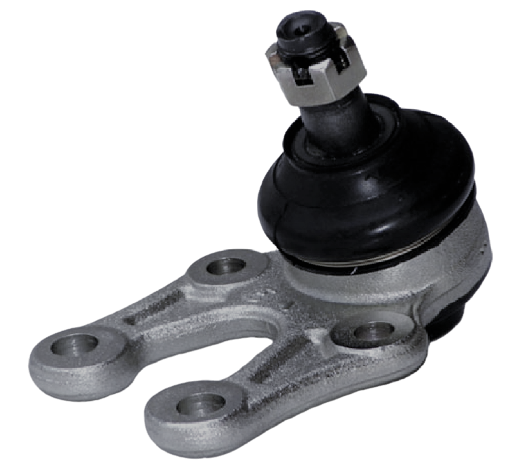How to Check if the Ball Joint is Broken?

When should I check my vehicle's Ball Joints?
If your car makes squeaking or banging sounds from the suspension, it may be time to check the ball joints. You should still double-check both sides if you find a faulty ball joint on one. When a person needs a joint replaced, they will also get a new ball joint.
Keep reading for an in-depth look at how to identify defective ball joints.
1. Checking the Quality of the Ball Joints
If you hear a noise while driving, you should try to locate its source to identify the issue quickly. Hear if the sound is coming from the front or the back. It could be a problem with the front-end suspension or the steering if it is upfront.
2. Regularly check the Ball Joints Visually
Once the engine runs, turn the steering wheel to the left and right a few inches. Become attuned to any creaking or clunking sounds. It is important to determine whether the ball joints or another suspension component are the sources of any noises.
Crawl under the car and look at the ball joints to ensure they are in good working order. There is a ball joint in the shoulder and knee on both sides. Tearing or otherwise damaging the boot allows water and debris to enter the ball joint, causing wear and tear.
Tools on hand before you start:
Jack.
Standing Jack.
Flashlight.
Get the bar open by prying.
Tools for loosening lug nuts.
Wooden wedges used to stop wheels.
3. The Wiggle tire test
Get a jack and put it under the car where it says "jack" Lock the rear wheels and lift the vehicle so that the tire is a few inches from the ground.
The best places to grab the tire are at 12 and 6. To open it, first, push in at the bottom and pull out at the top, and vice versa. Act again while keeping an ear out for squeaking or clunking.
Appointing a helper to do this will allow you to keep an eye on the ball joints and pinpoint the source of the clunk or noise. Problems could be with either the upper or lower ball joints.
You can also check for worn tie rods and bushings if you grab the tire at the 9 and 3 o'clock positions and wiggle it.
4. Checking the ball joints after they've been removed
Changing the control arm requires removing the upper ball joint. Try to wiggle it by grabbing the ends of the ball joints. The ball joint is good if the boot is not torn and the joint rotates easily and is stiff.
When a ball joint becomes stuck when being moved or when it becomes excessively loose and movable, it is time to get a new one. When you move the ball joint back and forth, there shouldn't be any clicking or other noise.
It's also important that the ball joint be very rigid. When a joint becomes loose and can be moved easily, it is time to replace it.
5. Repairing the Ball Joints
You should first see if the ball joints have a zerk fitting. You can grease them if they do. This could lessen their creaks and clacks. If the boot, however, is defective, you will soon find yourself back under the truck.
If you grease the ball joints, you may have a few more days before you have to take the truck in for repairs. However,
If the ball joints can't be greased, they need to be replaced. For the most part, the lower ball joint can be removed and replaced with a single piece.
The upper ball joints, on the other hand, are often permanently affixed to or pressed into the control arm. If this is the case, replacing the upper ball joint will require replacing the entire control arm.
How can you check if your Ball Joints are worn?
The symptom of broken ball joints is a vibration in the steering wheel, even when traveling straight, and a yawing to one side of the road when going over bumps. Uneven tire wear could be a sign of worn ball joints.
Worn ball joints may cause symptoms that aren't immediately noticeable.
If you've noticed any of the above symptoms or want to double-check your ball joints, do a visual inspection while driving.
What occurs when defective Ball Joints are ignored?
A bad ball joint could cause serious trouble if you don't take care of it. If a ball joint fails, you won't be able to steer. If a broken ball joint occurs, the tire may become lodged in the wheel well at its top or bottom.
If you're moving slowly, you won't do much harm. However, there will be significant injury or death if you are traveling at high speeds. Losing control of your vehicle at high speeds can lead to disastrous consequences, such as crashing into another car, a tree, or even a house.
*Advice: Check the car History
Making sure a car is in good shape is a must before purchasing. In any case, you probably didn't intend to spend thousands on something and then have to invest hundreds more.
Even if the car is sold "as is," you still want to know what's wrong with it. If you buy it, you might as well spend your money on something that doesn't require thousands of dollars in maintenance.
CARICO Enterprise’s.co is a wealth of information and auto accessories on everything from vehicle maintenance to what to look for in a used car before dropping your hard-earned cash. You can also read reviews of various models and makes as well as feedback from other customers.

